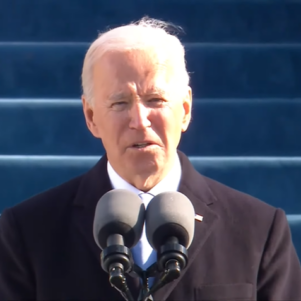Want the Feds To Run Local Public Schools? Make ‘Em Get A Permission Slip from Parents
By Sandra Stotsky | September 21, 2017, 10:19 EDT

As the dean of a prominent graduate school of education noted in an article published several years ago: “Schools are not the major cause of the achievement gap.” He also noted how ineffective most education reforms have been and how little improvement we have seen.
It is understandable that as the head of an education school, he didn’t want to see reform efforts transferred to other institutions. He still thought it was worthwhile to try to reform schools. (Schools are apparently a cause but not the major cause.) But maybe we have to start thinking the unthinkable. What could a society with decent intentions do to address what seems to be just an educational problem but isn’t? What can current public school parents do to convince other adults that massive adolescent under-achievement cannot be solved by educational interventions no matter how much money is allocated to the public schools? How can these adults be persuaded that that it is damaging to all children’s education to expect the wrong institutions (public schools and colleges) to keep on trying to solve the problem?
Here’s one education-oriented suggestion: Let Congress continue centralizing educational policies for low achievers and others in an agency of its choice but only for those students whose parents want the federal government to be in charge of their education. All parents should be allowed to participate, even though the Elementary and Secondary Education Act (ESEA) was intended chiefly for the children of low-income parents.
For centralized education policies to work better than they now seem to do (and to be constitutional), the parent(s) of an infant or low-achieving child (or underserved learner) would have to voluntarily sign an agreement to allow such policies to be formulated by a central agency (such as but not necessarily the U.S. Department of Education). Congress would also have to officially designate it as an agency that could legally provide as well as administer a service-delivery program, such as those that now exist for unaccompanied minors, refugees, and human trafficking.
The designated agency could contract out the delivery of its service to other entities, but it could not allow vouchers to be used for the program (since it would be a public, not private, program). Parents would be able to end their child’s participation in the program as they now do with a private school a child attends. They would simply notify program officials and register the child in the local public school the child would otherwise have attended.
There are several benefits to such an approach to centralization in the USA.
- First, it would restore the original purpose of the Elementary and Secondary Education Act (ESEA) to the 2015 re-authorization called the Every Student Succeeds Act. In 1965 Congress intended to improve the education of low-achieving and other students (especially in reading) and to “strengthen public education,” not to close unspecified “achievement gaps,” nor to implement a “social justice” approach to the mathematics and science curriculum in K-12.
- Second, it would simultaneously improve the education of the students whose parents want a content-focused education for them (not a content-lite, skills-based education) in their local public schools.
- Third, it would considerably clarify the issue of accountability. To what bodies are state and local schools accountable for the 90 percent of the funding they now receive (approximately) from local and state sources?
What needs to be changed as soon as possible is the unconstitutional nature (as well as permanently untenable situation) of four-year State Plans. At present, these plans have been formulated by a state’s education department staff and then approved by an appointed board of education in the executive branch of state government (but not necessarily the governor), and then approved by the federal education department. But they have not been approved by elected state legislatures, so far as is known, and the independently elected local school boards in the state.
Congress needs to give the agency it designates to be in charge legal authority to determine K-12 standards and tests for low achievers or “underserved learners” (another designation for them) –legal authority the U.S. Department of Education doesn’t have at present. This should be done in collaboration with the chief parent groups that Congress believes have a stake in their education.
Gap-closing standards, in contrast to content-based academic standards, inhibit the design or proper functioning of programs intended to increase all students’ academic achievement. Gap-closing standards may flatten or lower educational growth for higher achievers by reducing the academic demand in upper-grade standards so that lower achievers can eventually close an academic gap (the “soft bigotry of low expectations”). Cut-scores (which set the pass/fail standard) may also be lowered so that most students pass (and gaps are then declared closed). So far, no state has indicated exactly how it will close achievement gaps. (Neither has the U.S. Department of Education.)
If parents want gap-closing standards (presumably they are now in all State Plans called for by the Every Student Succeeds Act), then that would be their decision. However, by lowering expectations for all students, gap-closing standards become racist standards, especially if gaps are calculated between groups defined by race or national origin. Gap-closing standards can’t raise all students’ achievement and at the same time narrow gaps between some groups.
Whatever agency is given legal authority for delivering a full education program for the students whose parents signed over jurisdiction to would prepare annual Accountability Plans for Congress (the appropriating body for the funds spent on this program for low achievers). Such Plans should also be prepared for the parents of the children in the program.
It is important to note that the U.S. Department of Education does not have to be the legal authority. It could be a newly created agency similar to an old Chancery Court in England (a specialized equity court). But in this country today it could operate out of the Department of Justice.
Here is how these courts are described in Wikipedia:
The Court of Chancery was a court of equity in England and Wales that followed a set of loose rules to avoid the slow pace of change and possible harshness (or “inequity”) of the common law. The Chancery had jurisdiction over all matters of equity, including trusts, land law, the administration of the estates of lunatics and the guardianship of infants.
… Under the terms of trust law, the court, or its chosen representative, had the right to make decisions about the child’s upbringing and how to use their assets, on the understanding that everything it did was for the child’s own good. Thus, that child was not only a “ward of court,” but specifically a “ward in chancery.”
Wikipedia also notes: “The English Court of Chancery … was dissolved in the 1870s, but the Chancery Division remains a separate branch of the English legal system and of the High Court of Justice to this very day.”
To centralize education policy-making authority for low achievers in whatever agency Congress decides upon (and thus remove this authority from state governments), signed agreements are needed from parents that in essence make their own low-achieving children education wards of the federal government. State legislatures also need to pass laws allowing the federal government to set pass scores on tests for federal education wards. Currently, no state legislature has voted to allow the federal education agency or a testing company to determine the pass scores on a state test that may have public consequences in the state. Nor have state legislatures specified what kind of people should be setting these pass scores.
Federal education wards are to be enrolled in federal schools paid for by Congress and in programs staffed and evaluated by federal personnel (but not the same people) and appointed by elected federal officials. These programs might be for students in preschool to grade 12 and similar to the kind of “boarding schools” the French government began a decade ago for “disadvantaged secondary students.”
The growing controversy over data collection by the state and federal governments could be easily ended. All Congress needs to do is vote to allow data collection only for students who are education wards of the federal government.
If parents chose not to make their children education wards of the federal government, then their school-age children would attend local public schools financed only by local and state taxpayers. Local public schools would be governed only by policies voted on by locally elected school boards and elected state legislatures, not by federal guidelines, state departments of education, boards of education appointed by a governor, nor by federal grants to state departments of education serving as pass-throughs to the public schools or to other private or public organizations.
In addition to an education-oriented solution to massive underachievement by adolescents, it is time for federal, state, or local policy makers to start thinking about non-educational approaches to what is not basically an education-caused problem. They need to design federal and state policies to promote stable two-parent families as the goal of annually evaluated programs. For starters, here are two of the many URLs on research and possible policies on this topic on the Internet.
In other words, we need to start addressing the major findings of the 1966 Coleman Report: Families matter more than teachers and schools. Non-educational approaches to massive adolescent under-achievement, as well as academically strong standards, can help us to start strengthening public education for all higher achievers as well as low achievers, as the Elementary and Secondary Education Act of 1965 intended, without assuming that any group of high achievers or low achievers has a particular color or national origin.
Sandra Stotsky, former senior associate commissioner at the Massachusetts Department of Elementary and Secondary Education, is professor of education emerita at the University of Arkansas. Read her past columns here.











